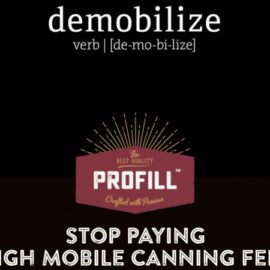

What’s the News?
According to a new report, the global beer market will grow to $502.9 billion (USD) in the next 10 years.
That’s a lot of billions.
It’s not clear if this is good news for U.S. craft brewers, who are already feeling the increased competition from domestic breweries. It will probably be great news for the barley, hops, and yeast producers, though, whose market keeps growing.
And as these international beers make their way to the U.S., the craft consumer will have even more choice.
That’s what we’ve been wanting, right? More choice?
But it must be exciting to be a beer drinker in South Africa. Their market is expected to grow at a rate of nearly 30%, which is to say at numbers U.S. craft hasn’t seen, like, ever. The highest they hit, best I can tell, was 15% growth in 2012. Pockets of the country, like California, saw numbers like these as recently as a few years ago, but by and large, those days are over save for specific sectors of craft, like gluten-free beer.
What’s It Mean for My Brewery?
In the short term, most U.S. breweries will probably not feel the change — it’s going to take some time before those international breweries start distributing to the States.
But that’s actually an opportunity to think about your long-term marketing game. Who do you want to be in five years? How large do you want to get? How far do you want to distribute?
However you answer these questions, your strategy still requires thinking about (1) new customers and (2) repeat customers, or in marketing terms: brand awareness and engagement.
Two Keys to Brand Awareness
1. Stand out visually
The numbers seem pretty clear: drinkers like a pretty package and a local character. Sometimes people say they want their visual brand to “tell their story.” Maybe I’m too literal, but I think it’s more accurate to say your visual brand “represents your values” or “creates an emotional association.” Those values and emotions had better tie into your story, but to me the story will always be verbal first, visual second.
But you make your first impression with your visual brand, so of course it’s extremely important. Take your cue from the larger breweries, too. Look professional. Create consistency across all your labels. Consider the “billboard effect” of the colors when you put two or three of your products on the shelf together.
2. Local = Loyal
Emphasize your place when you talk about yourselves. Be “from somewhere” so that you can “go somewhere” with your business.
Think about it: Where is Amazon from? Where is Coca-Cola from? Yes, there are answers to these questions, i.e., where they began or where their headquarters are, but we mostly think of them as abstract corporations. Shoot, even Coors and Budweiser, though they have some place association, have to work at cultivating it and certainly don’t have a local character.
When consumers try to choose between a local versus out-of-state beer, their intrinsic loyalty to where they live will incline them toward the local beer.
Brands that are from nowhere tend to trade in commodities, not artisanal products.
Don’t let your beer become a commodity.
Two Keys to Engagement
1. Ask customers for their email addresses
It sounds stupid because it’s so simple, but failure to ask for what you is a common marketing mistake. This assumes you’re already active on social media, which is true of most breweries. Social media creates easy opportunities for your followers to hear about you or like something you’re doing, but it’s also easy for them to keep their distance.
Email is the most effective and intimate form of online engagement, so you need to collect addresses. The two best ways to do that are: (1) ask for them, and (2) offer something in return.
2. Use your email list to nurture engagement
We usually think about social media as the platform for engagement, but breweries looking to establish long-term relationships with customers will need to use email.
How do you use email to nurture engagement?
The first way is to share your story. The more your customers know about who you are and what you’re about, the more connected they’ll be to you and the more likely they’ll be to visit your tap room — and to bring a friend!
The second way is, again, to simply ask. Ask subscribers to respond to a simple “get to know you” question like, “Which of our beers was your favorite?” or “What did you think of our tap room?”
Then reply to those emails. You may be blessed with the problem of having a ton of responses, but don’t complain. If each of those folks gets a personal email back — even a brief one — they will feel pleasantly surprised and get a little rush of endorphins.
Those are your endorphins. They will create a positive emotional association with your brand.
Forward-looking breweries and brands will use these simple strategies, among others, to carve out a space for themselves in this increasingly crowded market and thus have some buffer when the South African beers begin showing up on shelves. It will be easier to get excited about trying those beers when you know your own brand is robust enough to handle their appearance.
If you’re interested in learning more about how I can help with your email marketing, you can read more here or get in touch with me here.
Image via Wikimedia Commons.


